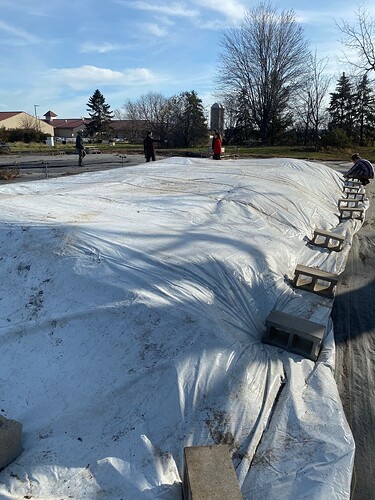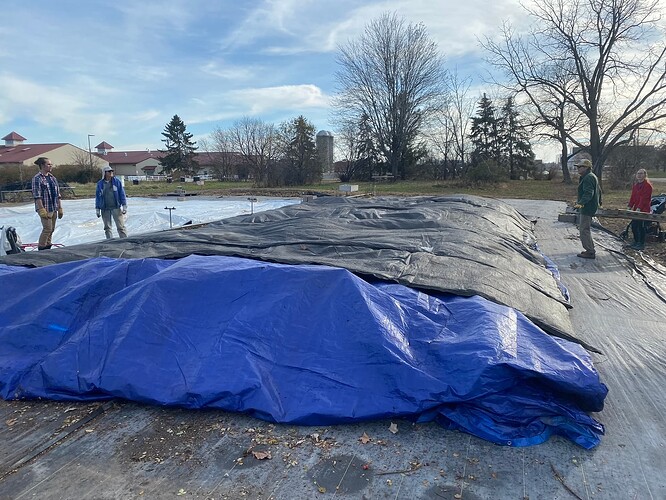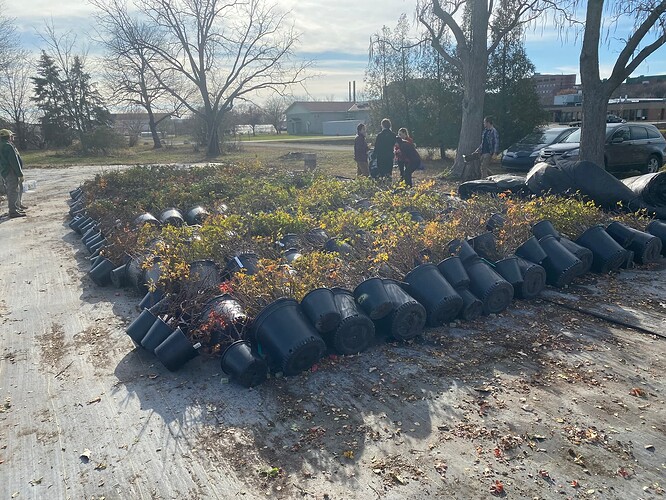It feels good to have the potted roses ready for winter at both the Univ of MN for our black spot research and also at home too. Construction blankets (used to keep concrete warmer when poured in late fall, etc.) are great and save so much time and labor overwintering pots. They come in 6’ x 25’ and 12’ x 25’ sizes. We get them from a local construction/concrete company. Compared to leaves, healing in pots into the ground, etc. this method has allowed us to really ramp up the number of potted roses we can handle for research / breeding. Water the pots well a day or so before covering so there is enough moisture to carry one through, either tip the pots or put them upright pot on pot (if tipped the branches don’t break so bad), put down rodent bait, put a cheaper tarp down first to protect the blankets from thorns, lay out the blankets overlapping a bit, and then put the final tarp over and weigh it down. Using a light colored tarp or piece of plastic is best to reflect the light so it doesn’t heat up more than necessary. The hope is to keep things cold and dormant under the covers. In years past I used a wireless thermometer under the covers and had the digital read out in the house nearby. Even when it was -20F outside, it was still about 30F under the covers.
Some rose society members create structures over beds of tender roses to protect them successfully in place using these blankets.
Come spring there is typically enough moisture left and things are in great shape to start the next season. At home I have the pots upright because come spring and uncovering them I can just get the hose going with a sprinkler to water them. If they were tipped, I don’t think I’d have the energy to put them all up at once so water can get in the pots.
Hopefully this method is helpful to others that struggle overwintering potted plants in cold climates and allows for expansion of rose breeding projects/numbers.


